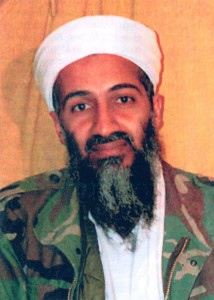
UPI/FILES
The organization Judicial Watch had filed a Freedom of Information Act request seeking 52 images of bin Laden taken after his death by U.S. Navy SEALS and other military and Central Intelligence Agency officials, which the Obama administration had classified Top Secret to keep the photos from being used by militants.
“We affirm because the images were properly classified and hence are exempt from disclosure under the act,” said the U.S. Court of Appeals for the District of Columbia in its ruling. Some of the images were posed for facial identification to confirm it was bin Laden’s body.
“The CIA’s declarations give reason to believe that releasing images of American military personnel burying the founder and leader of al-Qaida could cause exceptionally grave harm,” the three-judge appeals court wrote. “Together, these declarations support their declarants’ determinations that releasing any of the images, including the burial images, could reasonably be expected to trigger violence and attacks ‘against United States interests, personnel, and citizens worldwide.'”
The al-Qaida founder was killed on May 1, 2011, by U.S. forces during a raid on his compound in Abbottabad, Pakistan, and his remains were buried at sea. The CIA said at that time it would withhold images taken after his death, many “quite graphic” and “gruesome.”
Judicial watch sued for the release of the photos — some showing the fatal bullet wounds — but John Bennett, the CIA’s director of National Clandestine Service, asserted all of the images had been properly kept secret “because, if disclosed, they could be expected to lead to retaliatory attacks against Americans and aid in the production of anti-American propaganda.”
Copyright 2013 United Press International, Inc. (UPI).






